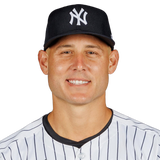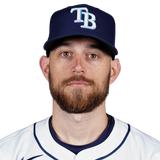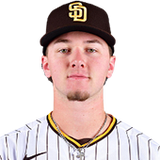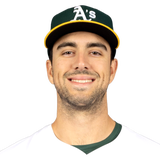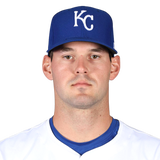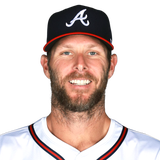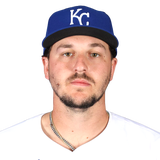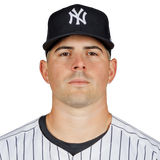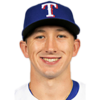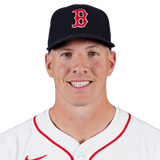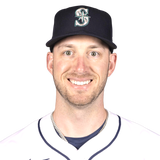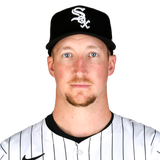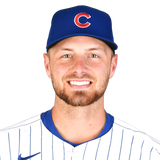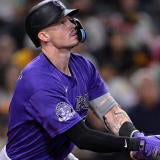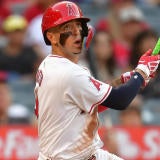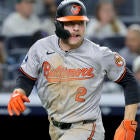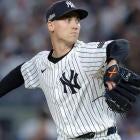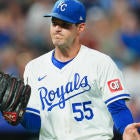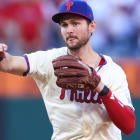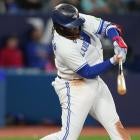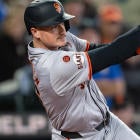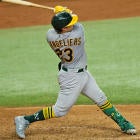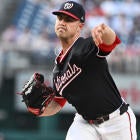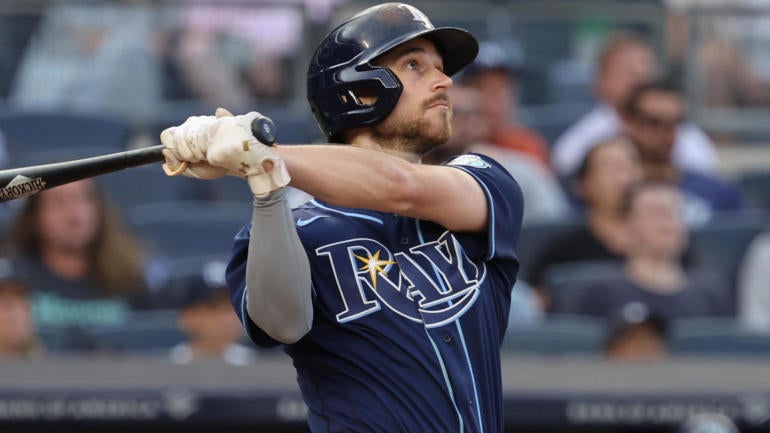
The term "sleeper" is a bit overloaded for Fantasy. You could use it to describe literally anyone who you think will outperform his draft position.
For the purposes of this article, I've tried to narrow the meaning a bit. The purest definition of a sleeper to me is a player whose cost doesn't seem to account for his upside. It's not just that the risk suppresses the cost. It's that the cost doesn't even seem to acknowledge the reward, opening the door for a particularly large return on investment.
- Sleepers 2.0: Scott | Chris | Frank
- Breakouts 2.0: Scott | Chris | Frank
- Busts 2.0: Scott | Chris | Frank
Naturally, these aren't the only players to prioritize in drafts. Having a team full of sleepers probably means you've neglected to draft enough sure things. But if I can get any of these players at his cost, consider it a job well done.
THE NEWCOMERS
Luis Campusano, C, Padres
| ||||||||||||
FantasyPros ADP: 282.6
You'd be forgiven for forgetting what a big deal Luis Campusano was in the minors. The Padres let him spin his wheels at Triple-A for so long that it seemed like he might just stay there forever. In all, he hit .300 over his minor-league career while striking out at just a 15.7 percent clip, and when he finally got his chance in the big leagues after Austin Nola washed out and Gary Sanchez was lost to injury, he did much the same, batting .319 while striking out at just a 12.1 percent clip.
It's the steadiness that stands out most when sizing up Campusano's minor-league career, making last year's trial run easier buy into even though the exit velocities were nothing to write home about. Strength certainly isn't at issue. There were reports of him using a 40-ounce bat in past minor-league seasons without compromising his high batting average or contact rate. He's just a strange hitter in every respect, employing a stance so wide open that he's looking straight on at the pitcher to begin his at-bat, much like former Blue Jays third baseman Tony Batista. But the numbers were always there.
The opportunity is now as well, but because it's happening at a time when so many other young catchers are breaking through -- names like Francisco Alvarez, Logan O'Hoppe, Bo Naylor and Gabriel Moreno -- Campusano is being treated like an afterthought. And to be fair, I would prefer those other guys to him as well. In fact, the catcher pool is deep enough that, at least in one-catcher leagues, you may never get aound to drafting Campusano. But if you play in a two-catcher league, he's one of 17 who I'd feel comfortable taking as my starter even though he goes considerably later than the rest.
Anthony Rizzo, 1B, Yankees
| ||||||||||||
FantasyPros ADP: 284.2
Why would a 34-year-old whose numbers cratered last year be of any interest now? It has a little something to do with why exactly those numbers cratered, and on that score, Rizzo has an especially good excuse. He played most of last season with post-concussion symptoms. "Cognitive impairment" was one of the terms used when the Yankees finally sent him for additional testing in August. If the hardest thing to do in sports is hit a baseball, imagine trying to do it through a sort of brain fog that slows your reaction times.
"The best way I can explain it is, if you have a couple of drinks the night before," Rizzo said after a two-homer game early this spring. "I'm just happy it's over."
Homering twice in one game wasn't something Rizzo was doing in his impaired state. In fact, he had just one home run during the 46-game stretch in which he played through his post-concussion symptoms, batting .172 (29 for 169). He hit .304 (62 for 204) with 11 home runs during the 53-game stretch that preceded it, so the difference was night in day.
"Not that I'm a superhero, but I feel like I've got some superpowers back," Rizzo said. "I can see the ball the right way again and feel like I can do damage."
Good timing, too. You may have heard the Yankees added Juan Soto this offseason, and he and Aaron Judge -- two of the best on-base men in the game, in addition to everything else they do -- are poised to bat second and third. And who's expected to bat behind them? That's right: Rizzo. There may not be a better RBI spot in all of baseball. He's not a sure bet to hold up over a full season, being 34 and all, but as a late-round corner infield option, he's all upside.
Brandon Lowe, 2B, Rays
| ||||||||||||
FantasyPros ADP: 313.4
It seems to me like we've forgotten what we have in Lowe, a player who put together one of the all-time power seasons for a second baseman in 2021, hitting 39 homers with 99 RBI and 97 runs scored. You might say that's because he's come nowhere close to those numbers the past couple years -- and it's true he's missed time with injury -- but he's coming off a season with 21 homers in 436 plate appearances. That's a 30-homer pace if you give him the number of plate appearances he had in 2021. Some second basemen might be able to match that sort of home run output -- Nolan Gorman comes to mind -- but it's not clear that any one surpasses Lower on that front.
So why are we drafting him 27th at the position, behind the likes of Jonathan India, Whit Merrifield and Luis Rengifo? "The injuries," you say, which would be a fine argument for putting Lowe outside the top 12. But we normally don't consider a spate of bad injury luck as reason to push a player out of the draftable range completely -- not when he's still producing with the at-bats he gets.
"The numbers have been there every single time that I am on the field," Lowe recently told MLB.com. "I feel as good as I did in '21, so just got to stay on the field like I did in '21 and we should be all set."
Oh, but he plays for the Rays, you say, and anyone who plays for the Rays is condemned to part-time duty. To the extent that's true, it doesn't explain dropping Lowe beyond other part-time second basemen, like those listed above -- and it's not even so true in Lowe's case. Despite being a left-handed hitter, he started against five of the final seven lefties the Rays faced during the time he was healthy. Take it from the man who makes out the lineup card, manager Kevin Cash.
"When he's healthy, he gets MVP votes," Cash said of Lowe earlier this spring.
Maybe Lowe's back flares up again and he misses another 40 games or so, but if not, you may well have a 30-homer, 90-RBI second baseman for the cost of your last pick or two.
Jackson Merrill, SS, Padres
| ||||||||||||
FantasyPros ADP: 407.0
No team has made a higher priority of promoting prospects than the Padres, who in spring trainings past have handed surprise opening day assignments to players like Chris Paddack, Fernando Tatis and C.J. Abrams. It looks like they're poised to do the same with Jackson Merrill, a consensus top-20 prospect who barely reached Double-A as a 20-year-old last year. He was merely OK there, it's worth noting, batting .273 with a .782 OPS, but scouts rave about his plate coverage and ability to hit fellow lefties, projecting big power gains in his future.
Might the Padres believe his future is now? Well, they entered spring training with two outfield jobs unclaimed and have seemingly earmarked one for the young shortstop. Here's how AJ Cassavell, the team's beat writer for MLB.com, put it: "If Merrill can prove it at the plate, he'll be on the roster." Pretty definitive. So far, the 20-year-old has done a nice job putting bat to ball and has been a regular presence on the bases. And even playing out of position, he's been up to the task defensively.
Is he actually ready for this? I have my doubts. Petco Park isn't a great venue for power, and Merrill has yet to show he's fully developed in that regard, as good as the hit tool may be. But when a prospect of this pedigree has the inside track on at-bats, you take him and hope for the best, particularly when the cost is essentially nothing.
Joe Boyle, SP, Athletics
| ||||||||||||
FantasyPros ADP: 412.5
The Reds giving up Joe Boyle for middle relief help at the trade deadline last year wasn't some jaw-dropping development. He was pretty far down their pitcher hierarchy and didn't seem like he'd amount to much anyway, not with a 7.2 BB/9 rate over his minor-league career (including 7.1 just last year). But to hear the Athletics talk about him now, you'd think they have an ace on their hands.
What that untenable walk rate concealed was some truly scintillating stuff. There's a reason Boyle also had 13.7 K/9 over his minor-league career. His fastball is a top-of-the-scales offering that averaged 98 mph during his brief stint in the majors last year, and his slider is a genuine chase pitch. Baseball America rates both as 70-grade offerings.
But it doesn't matter if he can't throw strikes, right? That's the crazy part. He suddenly can. Specifically, Boyle threw 66 percent of his pitches for strikes during a three-start trial at the end of last season and has so far walked no one through 5 1/3 innings this spring. That's a tiny sample, of course -- 21 1/3 innings in all -- but the difference is so stark that it's hard to ignore.
Athletics manager Mark Kotsay speculates that Boyle was trying to be too fine in the minors and has responded well to the team's insistence that he attack the zone in the majors. Boyle doesn't offer much explanation himself, telling MLB.com "I just finally made that adaptation." Maybe it's just a blip and his track record will catch up to him in due time, but if it is legitimate, then Boyle has the makings of a bat-misser extraordinaire and could be exactly the sort of miracle pitcher you always hope to find at the end of your draft.
THE HOLDOVERS
Cole Ragans, SP/RP, Royals
| ||||||||||||
FantasyPros ADP: 100.6
Our first clue of what was coming for Ragans was the 4 mph velocity bump last spring. A 1 mph increase can be enough to transform a pitcher completely, but 4 was almost too much to process at the time and soon forgotten anyway because he became buried in the Rangers bullpen. It was the Royals, of all teams, that had the good sense to free him, acquiring him in the Aroldis Chapman trade, and with a few tweaks to his arsenal, he was off to the races, putting together a 2.70 ERA, 1.06 WHIP and 11.6 K/9 in 11 starts from Aug. 2 on.
But maybe you know this already. Maybe everyone who plays Fantasy Baseball does. Judging by early ADP, though, knowing is not the same as believing, and it's on these grounds that I call Ragans a sleeper. Him going 30th (or thereabouts) at starting pitcher is the sort of weak tea that doesn't pass muster in our current pitching landscape. Between the shift ban, the increased base runner activity, the sticky substance crackdown and the continued inconsistencies with the ball itself, there are simply too many ways a start can go bad now, and time and time again last year, we saw things spiral out of control for even some of the best pitchers in the game. In such an environment, the only surefire way to avoid getting burned is to avoid contact altogether.
I understand that "surefire" is about the least fitting description for Ragans. He's a two-time Tommy John survivor with a shaky control history and a short track record of success. But he embarrassed the opposition for two solid months with no less than four swing-and-miss secondaries and a fastball that peaked at 101 mph, putting him among the hardest-throwing left-handers in history. It makes him one of just a handful of hurlers with the stuff to navigate the current pitching minefield, which to me makes him more like a top-15 option at the position.
Chris Sale, SP, Braves
| ||||||||||||
FantasyPros ADP: 139.4
Another year, another chance for me to tell you that Chris Sale, despite any evidence to the contrary, is still good. I was tempted to back off that position until the Braves decided to deal their No. 1 trade asset, Vaughn Grissom, for him in December. Few things are as validating in the Year of Our Lord 2024 as Alex Anthopoulos backing your play. He sees what I also see, which is that, for all the injuries of the past several years, Sale remains a bat-misser of the highest order. his 11.0 K/9 last year would have ranked fifth among qualifiers, and his 13.2 percent swinging-strike rate would have ranked ninth. At a time when more contact is leading to more baserunners, which is leading to more activity on the base paths, missing bats is the safest way forward.
But there's the rub. How is Sale, a pitcher who has thrown a total of 151 innings over the past four years, anyone's idea of safe? OK, so he's not, but it's more a question of what sort of profile is the safest bet to deliver in this new world for pitchers. Sale has it in a way few pitchers do.
Looking back through that injury history, there was the Tommy John surgery in 2020, but then there was also a fractured rib cage and a fractured wrist, which were more like freak occurrences than the natural consequences of his job. The stress reaction in his shoulder last year was a little more worrisome, but he was at his best after returning, delivering a 3.92 ERA, 1.05 WHIP, and 11.1 K/9. Nobody expects him to go 215 innings as he did in his heyday with the White Sox, but if Sale can give you 140 with the Braves offense backing him, it'll do wonders for your place in the standings.
Vinnie Pasquantino, 1B, Royals
| ||||||||||||
FantasyPros ADP: 152.2
We're doing this again, huh? Yes, things didn't end well for Pasquantino in 2023, which means you've probably forgotten how well they started. Through 38 games, he was slashing .298/.383/.539, looking every bit like the OPS hog he was hyped to be. It was about that time that his shoulder began bothering him, and as we all know, what was initially classified as discomfort was eventually revealed to be a torn labrum that would require season-ending surgery.
But "eventually" is not something to gloss over. Pasquantino played at less than 100 percent for a while, and given what we knew about him heading into 2023, it probably explains why his average exit velocity went from 91.8 mph in those first 38 games to 85.1 mph thereafter, dragging down the rest of his numbers such that the bloom is now off the rose. But we're still talking about a guy who slashed .292/.382/.569 over his minor-league career and .295/.383/.450 as a rookie -- a guy whose quality of contact is only outdone by his quantity of contact, his 11.9 percent strikeout rate ranking alongside slap hitters like Steven Kwan and Nico Hoerner. In a year, he's gone from being one of the most coveted first basemen to an also-ran at the position, which seems like too steep of a discount.
Carlos Rodon, SP, Yankees
| ||||||||||||
FantasyPros ADP: 158.6
As I've pointed out already, the pitching environment we were introduced to last year isn't so conducive to aces, with the clearest differentiator being an ability to miss bats. That's something Rodon did in no small measure in 2021 and 2022, when he had a 2.67 ERA and 1.00 WHIP to go along with his 12.2 K/9. It made him a surefire ace then and gives him the capacity to be one now.
The problem, of course, is that his 2023 was an out-and-out disaster, which makes it so nobody trusts him anymore. That's fair enough, but before rendering a final verdict, it's important to understand why. And while I can only offer guesses along those lines, my biggest is that he suffered a forearm strain in spring training and was never quite right thereafter. There were signs of this even before he returned in July, his initially short timetable being pushed back by back issues, and it sounds like all the turmoil may have wreaked havoc mechanically.
"I think the consistency of the delivery is a piece of it," pitching coach Matt Blake told the New York Post back in October. "There's certain things in the lower half that we want to see consistently that we'll kind of dive into."
But Rodon still had the same velocity as the previous two years. He still had nearly a 40 percent whiff rate on his slider. He still has the building blocks of an ace even if they've been toppled a bit, and in this environment, having an opportunity at such upside so late is nothing short of a gift.
The four stud rookies
FantasyPros ADP (respectively): 148.6, 175.6, 184.2, 217.0
The top four in my top 100 prospects for 2024 all have a decent chance of making the opening day roster. If that sounds far-fetched to you, then you haven't noticed the trend in the last couple of years of the very best prospects doing exactly that. The prevailing assumption is that service time manipulation still drives the timeline for prospect promotions -- and it can play a role, sure -- but the latest CBA introduced a new incentive that supersedes that one, rewarding draft picks to teams whose top prospects make good. To be eligible, the prospect must have spent his entire rookie season on the major-league roster, from opening day on. It's a big reason why we saw Jordan Walker and Anthony Volpe make their respective clubs last spring, not to mention eventual Rookie of the Year winners Corbin Carroll and Gunnar Henderson.
And a couple of these players' teams have already tipped their hand. The Rays promoted Junior Caminero late last year, following the Carroll and Henderson plan of giving him a sneak peek so the opening day task wouldn't seem so daunting. Meanwhile, the Brewers signed Jackson Chourio to a long-term contract, taking the service time manipulation incentive off the table completely. The Brewers have also left a clear opening for Chourio in their lineup, as the Orioles have for Jackson Holliday. Caminero's and Wyatt Langford's paths are cloudier, but no one standing in their way is immovable. The beauty of this new incentive is that the talent tends to win out.
And the talent is what matters for our purposes. It's true that, on the whole, prospect call-ups haven't been as bankable in recent years (see Walker, Volpe), but if anything, that's only helped to drive down the cost of such lottery tickets. Those who invested in Carroll and Henderson last year, not to mention Bobby Witt and Julio Rodriguez the year before, were richly rewarded. Drafting a prospect is still your best bet for securing huge production at a not-so-huge cost, and while it's a bet you may ultimately lose, the consequences at these players' current cost are almost nothing.
If I had to rank these players' chances of making the team right now, I'd go Chourio, Holliday, Langford and Caminero, which is mostly reflected by their ADP. If it becomes official for anyone, though, you can expect his cost to skyrocket.
Nick Pivetta, SP/RP, Red Sox
| ||||||||||||
FantasyPros ADP: 186.0
It's at this point that you may start freaking out, thinking you've wasted the last 10-15 minutes reading an article from 2019, but let me assure you that my enthusiasm for Pivetta is brand new to 2024. With three pitches capable of generating whiffs at a high rate, the strikeout potential was always there, which is what made him a trendy sleeper all those years ago. But sometimes it takes that long for talent to coalesce.
The key for Pivetta may have been a move to the bullpen in mid-May, where the need for immediate results forced him to go on the attack unlike ever before. He went from throwing 63 percent of his pitches for strikes before the move to 66 percent thereafter and took that mentality back with him to the rotation in the second half, putting together a 3.30 ERA, 0.96 WHIP and 12.5 K/9. There were indeed a lot of relief appearances mixed in there, but they were mostly of the multi-inning variety as the Red Sox eased Pivetta back into starting. He went seven innings in each of his final two outings, allowing a combined five hits with 17 strikeouts to two walks. That'll play.
Jeimer Candelario, 1B/3B, Reds
| ||||||||||||
FantasyPros ADP: 227.2
You may have heard that Great American Ball Park is a good place to hit. No other venue is more conducive to home runs than it, and that's been true basically since the day it opened in 2003. If you require more evidence, look no further than TJ Friedl, who somehow smashed 18 homers last despite some of the worst exit velocity readings in the game. Candelario's exit velocity readings aren't among the worst in the game, but they're in the lower half, making his career-high 22 homers last year about the best he should be able to do. But Statcast estimates he would have hit 30 homers if he had played every game at Great American Ball Park last year.
He'll never play all of them there, but he will play half this year after signing with the Reds in the offseason, and it doesn't seem like early drafters are taking into account what it could mean for him statistically -- not only because of the venue but also because he'll be playing the role of veteran facilitator in a lineup that's dripping with young talent. Keep in mind Candelario has spent the majority of his career in Detroit, playing in maybe the most power-suppressing park in all the majors. He's following in the footsteps, then, of Nick Castellanos, whose departure from the Tigers led to him hitting .309 with 34 homers and a .939 OPS in his one full season in Cincinnati. Candelario won't do that, of course, but it's not hard to imagine him hitting .275 with 25 homers and the sort of counting stats that vault him to must-start status in Fantasy.
Mitch Garver, C, Mariners
| ||||||||||||
FantasyPros ADP: 243.2
Garver homered 31 times in just 93 games for the Twins in 2019, and I've been chasing that high ever since. I know what the actual numbers look like, but he's left breadcrumbs to suggest the 31-homer guy is still in there, buried in a history of injuries and playing-time concerns. The Rangers may have unlocked the secret, though, by making him their primary DH over the final six weeks. He started 40 of their final 43 games, which is far more than the average catcher-eligible player gets to play, and hit .283 (50 for 177) with 14 homers and a .937 OPS from Aug. 1 on, making him the third-best catcher in Fantasy during that stretch.
Playing DH of course limits his chances to get hurt and takes any concerns about his defense off the table, but it's a narrow path to playing time that not many teams can provide him. Fortunately, one of those teams saw fit to sign him this offseason, positioning him to be the Mariners' primary DH this year and next. T-Mobile Park is a tougher place to hit than Globe Life Field, but with his high-end exit velocities, Statcast estimates that Garver would have hit the same number of home runs at both venues last year. With his role secure and his opportunities for derailment limited, this may finally be the year he performs like a top-five catcher, where he remains eligible in Fantasy.
Cristopher Sanchez, SP, Phillies
| ||||||||||||
FantasyPros ADP: 301.8
Nobody thought much of Sanchez when the Phillies slotted him into the rotation in mid-June. He was, after all, a 26-year-old with no real prospect pedigree and mediocre minor-league numbers. Even when he proved effective enough to enter the streamer conversation, it seemed like regression would take hold eventually, but instead, he just got better and better and better. By the season's end, it was hard to find anything wrong with him.
Understandably, it's still a source of skepticism, and if it wasn't, I might be sitting here making the bust case for him instead. But to put actual numbers to the narrative, Sanchez's 57 percent ground-ball rate would have ranked second among qualifiers, and his 4 percent walk rate would have ranked fourth. By those measures alone, he would seem to be a useful Fantasy pitcher, but then came the coup de grace in September. He began throwing his changeup more and became a genuine bat-misser as a result. The pitch had a 43 percent whiff rate for the year and gave him a 17 percent swinging-strike rate for the month. He struck out 10 in two of those starts, including one against the mighty Braves.
Maybe time brings Sanchez down to size and he ends up performing more like the pitcher he was in the minors, in which case he'd have no Fantasy value. But if he had just dropped out of the sky last June and we had no other reference point for him, we'd think he's a stud in the making, capable of dominating in all three of the areas FIP accounts for.
Emmet Sheehan, SP, Dodgers
| ||||||||||||
FantasyPros ADP: 341.4
The talk of the minors the first two months with a 1.86 ERA, 0.88 WHIP and 14.9 K/9 for Double-A Tulsa, Sheehan arrived to great fanfare in June and then very quickly squandered it, struggling to generate whiffs as his ERA climbed near 7.00 after seven starts. And then it seemed like everyone checked out on him, his meteoric rise having been determined to be a mirage.
What you may have missed -- and what a mere glance at the numbers won't show -- is how different he looked at the end of the season, putting together a 1.98 ERA, 0.73 WHIP and 15.8 K/9 in his final three appearances (spanning 13 2/3 innings), including a 10-strikeout effort at Coors Field in the final week of the season. He stopped throwing his fastball so much, instead giving his slider and changeup a chance to shine, and all three pitches played up as a result, giving him an astonishing 23 percent swinging-strike rate during that time. I'd call it Strider-like, but Spencer Strider's swinging-strike rate last year was a mere 18.9 percent. I'd call it a small-sample fluke, but Sheehan also had a 20 percent swinging strike rate during those first two months at Double-A. Now that he's figured out sequencing, it would appear the stuff plays.
One reason the Dodgers were willing to move Ryan Pepiot in the Tyler Glasnow deal, I think, is because of what Sheehan showed he could do at the end of the year. A minor shoulder issue this spring has put him far enough behind that he probably won't make the Dodgers' starting five, but with all the mixing and matching they figure to do this year, he's going to slot in sooner than later. And seeing as he threw a combined 123 1/3 innings last year, he may get enough runway to hold that slot.
Erick Fedde, SP, White Sox
| ||||||||||||
FantasyPros ADP: 369.0
Do you see those numbers? Not the Erick Fedde you remember, right? No, that one compiled a 5.41 ERA in six years with the Nationals, never making good on the potential that once made him the 18th overall pick in the 2014 draft. All it took was one year overseas to transform him into an absolute world-beater, winning Korea's equivalent of both the Cy Young and MVP.
He wouldn't be the first no-name to use a successful stint in East Asia as a springboard to major-league prominence -- one of the most notable being Merrill Kelly, who also pitched in Korea. But what Fedde did was next level and actually began before he even set foot in Korea. He spent the offseason prior working at the PUSH Performance facility to remake his mechanics and arsenal, adding a sweeper and split-change that White Sox pitching advisor Brian Bannister compared to Logan Webb's. And you know what makes that comparison apt? Webb led all the majors last year with a 62.1 percent ground-ball rate. Fedde's rate in Korea was 70 percent, which is unheard of. The strikeout and walk rates were also unlike what we've seen from Fedde before.
You can probably just forget everything we've seen from Fedde before because this is a completely different pitcher. How exactly his performance from Korea will translate is impossible to say, but nobody who's taken this career path was as dominant over there as he was, which would suggest an ace outcome is within the realm of possibility.
Michael Busch, 3B, Cubs
| ||||||||||||
FantasyPros ADP: 382.4
The Dodgers liked Busch, refusing to include him in countless trade negotiations over the years, if reports are to be believed. But after another offseason spent blocking his every path to playing time, they finally conceded that it wasn't going to happen with them and dealt him for a couple prospects of lower urgency, almost like a shop clerk rotating milk containers so that nothing's permitted to spoil.
Age 26 is pretty close to the spoiling, though, and so even though this opportunity for Busch has been a long time coming, the delay might lead some to conclude that he's not actually as good as his numbers, that his .323/.431/.618 slash line at Triple-A Oklahoma City last year must have been a mirage. What that theory ignores is his 91.3 mph average exit velocity. It ignores his 89.5 percent zone-contact rate and 7.7 swinging-strike rate. It ignores the fact that by every data point modern analysts hold dear, Busch thoroughly dominated. It also ignores the years of scouting reports denoting a hitting prowess that wasn't fully backed up by the numbers -- not until 2023, anyway.
Busch is disciplined without being passive and powerful without being reckless. He knows when to swing and doesn't miss when he does, which is about as comforting of a hitting profile as you'll find. And we know that he'll actually get to play with the Cubs, which we could never say when he was with the Dodgers. That's reason enough to prioritize him late, particularly in points leagues where his walks are of direct benefit.




